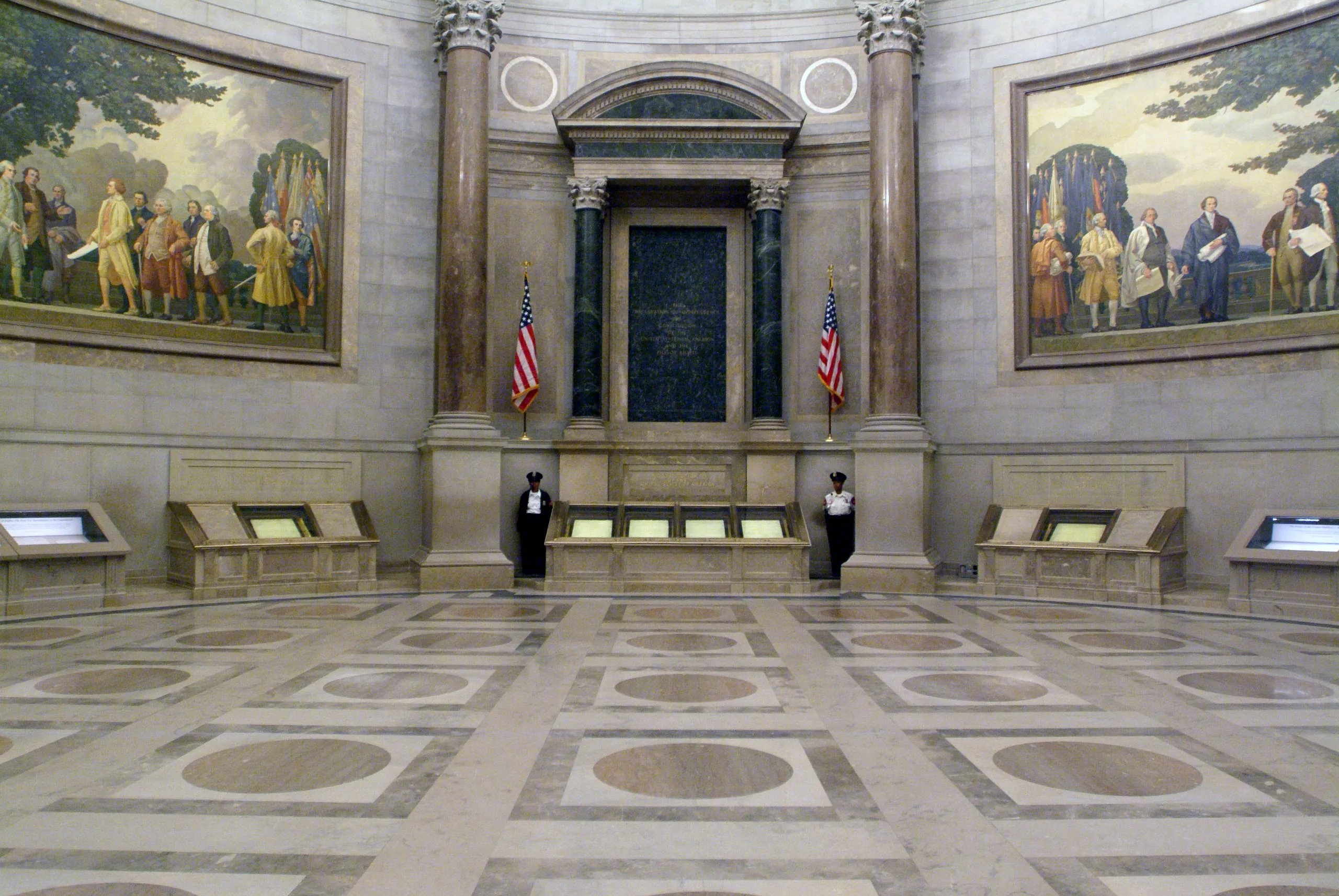The National Archives in Washington, DC, concluded its operations earlier than usual on Wednesday due to an incident involving two individuals who sprinkled red powder on the protective display housing the US Constitution, according to an official statement.
The Archives clarified that the Constitution, secured within its encasement, suffered no harm during the episode. The two individuals were promptly apprehended by security around 2:30 p.m., and authorities are currently conducting an investigation.
In a video posted on X, the perpetrators, who were subsequently detained by uniformed guards, advocated for the right to clean water and a sustainable climate while standing before the powder-covered display.
The National Archives (Credits: BNN Breaking)
Colleen Shogan, Archivist of the United States, emphasized the gravity of such vandalism and pledged to pursue legal action against the culprits to the fullest extent of the law.
The National Archives Rotunda is scheduled to remain closed on Thursday for cleaning, while the remainder of the National Archives Building will operate according to its regular schedule.
This incident is reflective of a broader trend involving high-profile acts of vandalism aimed at raising awareness of climate crises and other human-induced environmental issues.
Activists associated with the UK group Just Stop Oil have previously targeted renowned artworks in notable protests. In 2022, they poured tomato soup over Vincent van Gogh’s famous “Sunflowers” at a London Gallery, and in 2023, the group applied red paint and affixed their hands to the protective glass of Claude Monet’s “The Artist’s Garden at Giverny” displayed at Stockholm’s National Museum.
While such actions may attract attention, experts caution that they can also generate significant criticism and potentially backfire against the activists’ cause.
The Constitution is part of the permanent exhibition known as the “Charters of Freedom,” showcasing the foundational documents of the United States, including the Declaration of Independence and the Bill of Rights.
The documents are stored in state-of-the-art protective encasements, employing advanced preservation technology. Typically, the exhibit is open to the public for daily viewing from 10 a.m. to 5:30 p.m.
